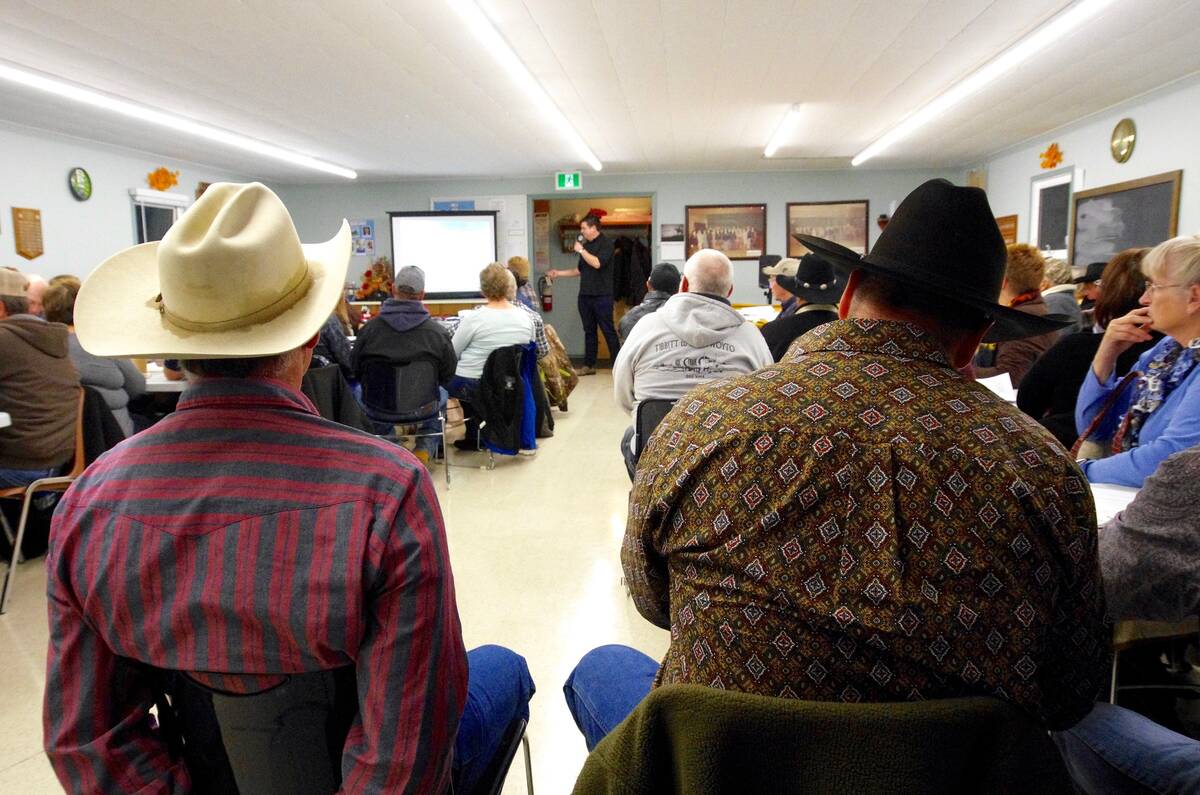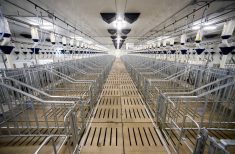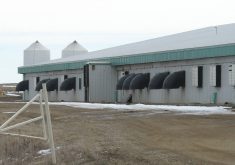Porcine epidemic diarrhea (PED) may not be the only battle in the near future for the province’s already busy top veterinary authority.
Manitoba’s office of the chief veterinary officer (CVO) is already occupied with the latest, and worst ever, eruption of PED—a virulent neonatal pig disease that, although no threat to humans, is well known to devastate young piglets. Now, however, the feather sector has its own boogeyman closing in.
Why it matters: Manitoba is in the grip of the worst PED outbreak on record while the threat of avian influenza has arrived. Is the province’s top veterinary office equipped to manage multiple outbreaks of multiple diseases?
Read Also

Don’t blow off that beef producer meeting
Local veterinarians and livestock experts often speak at beef producer group events. They have good advice for the farmer on vaccines, calving, beef herd management and more.
Manitoba is the latest on the list of Canadian provinces and U.S. states embroiled in what Wayne Hiltz, executive director of the Manitoba Chicken Producers, describes as a “continent wide” outbreak of highly pathogenic avian influenza (HPAI) strain H5N1.
Manitoba reported its first case April 23, in a poultry flock in the R.M. of Whitemouth. Days before, the province had confirmed samples taken from wild birds in two other locations, one near Waskada in the southwest, one near Dauphin, had also tested positive for H5N1.
The outbreak, the Canadian Food Inspection Agency (CFIA) had said, is driven exclusively on the Canadian side by cross-contact with infected wild birds.
“The impacts of avian influenza are at both the infected farm level, as well as industry logistics, neighbouring farms and international trade. Even an outbreak in a back yard flock can impact a billion dollar industry,” Hiltz said.
In the U.S., the hit has been dire. By April 25, The U.S. Department of Agriculture’s Animal and Plant Health Inspection Service (APHIS) had reported avian flu in 235 flocks across 29 states. An estimated 31.66 million commercial birds had been claimed or destroyed due to the virus
Manitoba’s nearest southern neighbour, North Dakota, had reported 13 farm cases.
Spring, and the return of migratory birds from some of the most impacted states to Manitoba, has raised local concern.
Canada saw it’s own cases starting in December. Cases in Newfoundland and Labrador and Nova Scotia heralded the first serious return of the virus in Canada since 2014-2015. In late March, the first Ontario farms broke, followed by several cases in Alberta.
By April 11, 260,000 farm birds had died or been destroyed, according to the CFIA. As of April 21, the most recent update, that number had grown to 35 farm outbreaks, affecting over 717,000 birds, including 350,000 in Alberta, 90,000 in Saskatchewan and 250,000 in Ontario.
In the four days since that update, the CFIA had reported an additional three cases in Saskatchewan, four in Alberta, two in Ontario and one in Quebec, as well as the first case in Manitoba.
Tools in place
Cam Dahl, general manager of the Manitoba Pork Council, worries that the CVO’s resources might be stretched, should another disease fight arise.
As of April 12, the province had confirmed 94 PED cases as part of the 2021-2022 outbreak.
“The diagnostic lab and the people in it are absolutely critical. They are part of the backbone of all of livestock’s management and response to diseases…and they have been taxed during the PED outbreak,” he said.
The pork council welcomed an April 6 funding announcement from the provincial and federal governments for that reason, he added.
Manitoba’s Veterinary Diagnostic Services will be getting a $2.2 million boost to revamp the Animal Health Laboratory Information Management System (LIMS), government said at that time. The system helps collect, analyze and report animal disease information to “provide valuable and timely diagnostic and surveillance data to stakeholders and clients,” Agriculture Minister Derek Johnson said.
He argued that the improvements would help improve decision making to limit the financial hit of animal disease, as well as prevent disease spread.
“The faster we get results turned around, the better,” Dahl agreed. “Yes, we need them. We need them badly. That being said, I also don’t want to be unreasonable and say that, ‘you need to make sure that the lab is staffed for peak capacity of handling three outbreaks at once,’ because then there’s going to be times when those resources aren’t being used. There is that need to get the balance.”
He would, however, like to sit down with the CVO after the PED outbreak subsides to “review what that ideal capacity should be.”
Hiltz says their conversations with the CVO indicate the office is ready for avian influenza, in conjunction with the CFIA.
A spokesperson for Johnson noted that the province takes the lead in cases like PED (a provincially reportable disease), compared to a federally reportable disease like avian influenza, which would be spearheaded by the CFIA. In the case of an avian influenza outbreak, they said, Manitoba Agriculture and the CVO would be working in co-ordinated response with the national agency.
“Simultaneous disease outbreaks would put pressure on existing resources,” they acknowledged. “However, we are able to deploy our staff, prioritize disease response and ramp down work where there is low risk.”
The province has also added five health and welfare specialists to the CVO team, they said.
The spokesperson also cited strong relationships with relevant producer groups, such as the Manitoba Chicken Producers, Manitoba Egg Farmers and Manitoba Turkey Producers.
The province has, “proactively reached out to these groups to ensure communication on the current situation, to stress vigilance around biosecurity and to talk about communication should an outbreak occur. We have also brought the CFIA into the conversations,” they said.
Both the CFIA and provincial poultry groups are urging producers to review and tighten biosecurity and cut off possible contact between wild birds and their flocks.
Hiltz added that backyard flock owners should consider keeping birds inside.
















